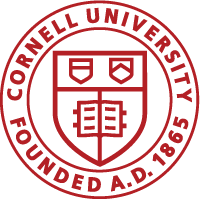The Role of Pannexin-1 in Inflammasome Activation and Its Regulation by Cysteine-Palmitoylation
Lipopolysaccharides (LPS) are potent virulence factors of Gram-negative bacteria, which are major pathogens of bacterial sepsis, a life-threatening and economically burdensome syndrome of severe immune dysregulation. While understanding how innate immune cells recognize and respond to LPS can lead to improved therapeutic strategies, discordant results in the literature complicate our understanding. The NLRP3 inflammasome is a supramolecular complex that promotes the maturation of potent cytokines in response to LPS to ignite systemic inflammation. Compelling in vivo experiments using knockout mice show that the ATP-channel–forming protein pannexin-1 (Panx1) plays a central role in activating the NLRP3 inflammasome downstream of LPS. However, in vitro experiments fail to recognize the contribution of Panx1. I hypothesized that the disconnect between in vivo and in vitro studies arises from in vitro models needing supplemental stimulation from exogenous molecules after LPS exposure to activate the NLRP3 inflammation, which bypasses the function of Panx1. In Chapter 2, I leveraged a genetically tractable, in vitro model based on human macrophages (optimally PMA-differentiated THP-1 cells) to reveal Panx1 as a key player in the activation of NLRP3 by LPS alone. I further uncovered a TLR4/caspase-8/caspase-3 axis that proteolytically activates Panx1 to trigger a purinergic pathway, culminating in NLRP3 activation without causing lytic cell death. If validated in vivo, these findings suggest that inhibiting Panx1 channel activity or cleavage could be strategies for treating sepsis-related systemic inflammation. Importantly, my work provides clarity to a long-standing debate regarding the relevance of Panx1 to NLRP3 inflammasome activation and proffers intriguing hypotheses for future investigation. Additionally, in Chapter 4, I revealed a novel post-translational modification of Panx1: cysteine-palmitoylation (S-palmitoylation), which is a reversible covalent lipid modification that restrains Panx1 channel function. I identified Cys347 as the site of this modification. Historically, Cys347 is known to significantly impact Panx1 channel activity, but an explanation for its effect has remained elusive until now. I further uncovered an understudied acyl-transferase enzyme, DHHC15, as a major writer of Panx1 S-palmitoylation in both human and mouse cells. Excitingly, my work provides preliminary data suggesting that S-palmitoylation of Panx1 restrains LPS-induced, Panx1-dependent NLRP3 inflammasome activation. Modulating Panx1 S-palmitoylation might offer a novel therapeutic strategy for controlling NLRP3 inflammasome activity in the context of inflammatory disease. For diseases characterized by excessive inflammation, like sepsis, promoting Panx1 S-palmitoylation or inhibiting its removal might reduce Panx1-dependent pathology.



